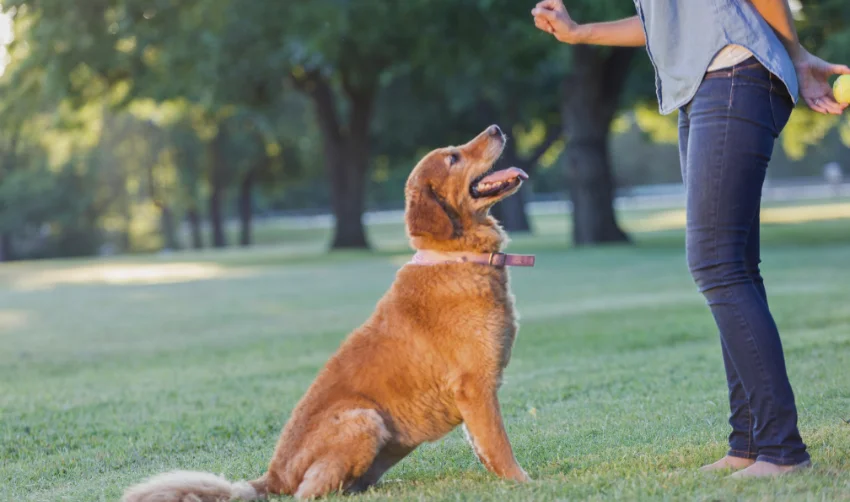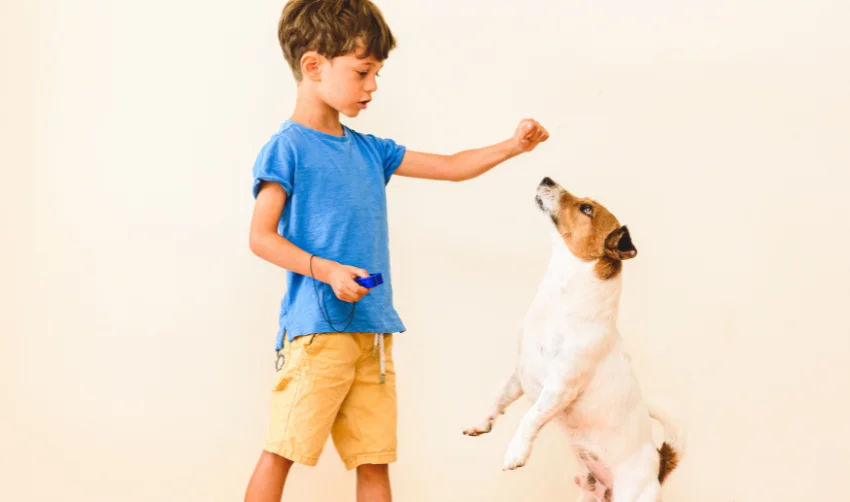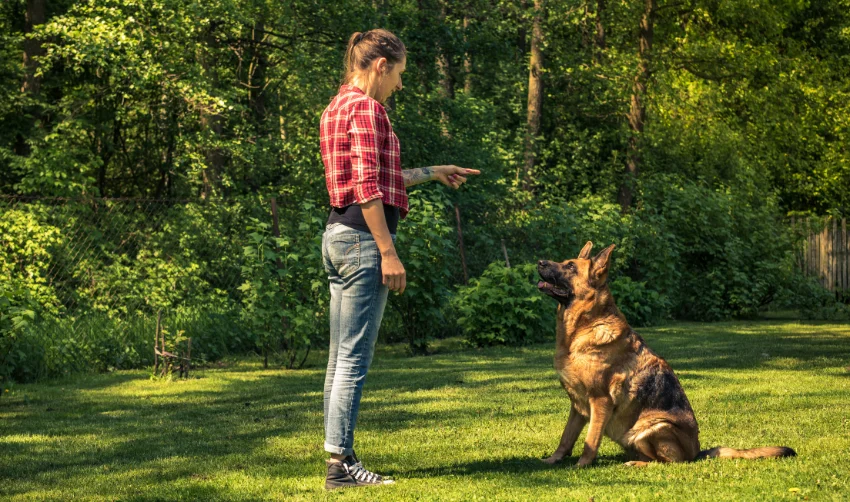Welcome to our comprehensive dog behavior training guide. This post is designed to help pet owners understand their furry friends better and address any dog behavior issues they may face. We will delve into the meaning of dog behavior, common behaviors, and how to train a dog with behavioral issues. We will also share the five golden rules of dog training. So, whether you’re dealing with a new puppy or an older dog with ingrained habits, this guide will be a valuable resource.
At Knowles Wellness, we uphold a holistic approach to pet care, recognizing the significance of veterinary compounding meaning in ensuring optimal well-being for your beloved companion. Embracing the concept of veterinary compounding meaning allows us to assist you in delivering unparalleled care for your pet.
What Is the Meaning of Dog Behavior?
Dog behavior is a complex interplay of actions and reactions that dogs exhibit in response to their environment. It’s a form of communication, with each action carrying a specific message. For instance, a wagging tail indicates happiness, while a lowered tail and flattened ears signify fear or submission. Understanding these behaviors can help pet owners build a stronger bond with their pets and address potential issues. It’s also important to remember that certain behaviors may result from health issues, so it’s crucial to have access to common dog medications when needed.
What Is the Common Behavior of Dogs?

Dogs, like humans, exhibit a range of behaviors regularly. Various factors can influence these behaviors, including their breed, age, health, and environment. Some common behaviors include barking, digging, chewing, and tail wagging. Each of these behaviors has a specific meaning in the dog behavior chart. Understanding these common behaviors can help pet owners better care for their pets and address potential issues. It’s important to remember that while these behaviors are common, each dog is unique and may exhibit these behaviors differently.
How Do You Train a Dog with Behavioral Issues?
Training a dog with behavioral issues can be a challenging task. However, with patience, consistency, and the right approach, it is possible to address these issues and help your dog become a well-behaved family member. Here’s a step-by-step dog training guide on how to train a dog with behavioral issues.
Identify the Behavior

The first step in training a dog with behavioral issues is to identify the problematic behavior. This involves observing your dog closely and understanding the triggers for the behavior. For example, if your dog barks excessively, try to identify what triggers this behavior – is it when someone comes to the door when they see another dog, or when they are left alone?
Understand the Cause

Once you’ve identified the behavior, try to understand the cause. Is the behavior due to fear, anxiety, boredom, or a lack of training? Understanding the cause can help you address the behavior more effectively.
Implement a Training Plan

Based on your understanding of the behavior and its cause, implement a training plan. This could involve positive reinforcement for good behavior, redirection, or in some cases, seeking help from a professional dog trainer. Remember, consistency is key in dog behavior training.
Monitor Progress

Keep track of your dog’s progress. It’s important to remember that change takes time, and there may be setbacks. Celebrate small victories and be patient with your dog.
Seek Professional Help If Needed

If your dog’s behavior does not improve or worsens, it may be time to seek help from a professional. A professional dog trainer or a veterinary behaviorist can provide more personalized guidance and support.
What Are the 5 Golden Rules of Dog Training?
Dog training can be a complex task, but by following the five golden rules of dog training, you can make the process easier and more effective. These rules provide a framework for effective training and help you and your dog enjoy a more harmonious relationship
1. Consistency Is Key

Dogs thrive on consistency. Use the same commands and signals for each behavior, and ensure all family members are on the same page.
2. Positive Reinforcement Works Best

Rewarding your dog for good behavior is more effective than punishing them for bad behavior. Use treats, praise, or toys to reward your dog.
3. Training Should Be Fun

Make training sessions enjoyable for your dog. This can help them associate training with positive experiences.
4. Start with Basic Commands

Start with simple commands like ‘sit’, ‘stay’, and ‘come’. Once your dog has mastered these, you can move on to more complex commands.
5. Patience Is a Virtue

Training takes time. Be patient with your dog and celebrate small victories along the way.
Conclusion
In this comprehensive dog behavior training guide, we have delved deep into the world of canine behavior. We started by exploring the meaning of dog behavior, helping you understand the complex interplay of actions and reactions that your furry friend exhibits. We then discussed common behaviors seen in dogs, providing a dog behavior chart that can serve as a handy reference for pet owners.
We also addressed a crucial topic – how to train a dog with behavioral issues. We provided a step-by-step dog training guide to help you navigate this challenging task with patience and consistency. Likewise, we emphasized the importance of identifying the behavior, understanding its cause, implementing a training plan, monitoring progress, and seeking professional help.
Finally, we shared the five golden rules of dog training. These rules, which emphasize consistency, positive reinforcement, enjoyment, starting with basic commands, and patience, provide a framework for effective training and can help you and your dog enjoy a more harmonious relationship.
We hope this guide will be a valuable resource for you, whether you’re dealing with a new puppy or an older dog with ingrained habits. We aim to help you build a stronger bond with your pet and effectively address potential dog behavior issues.
Remember, training a dog is a journey, not a destination. It requires patience, consistency, and a lot of love. But the rewards – a well-behaved dog and a strong, loving bond with your pet – are worth the effort. For more information on holistic pet care and how it can complement your dog training efforts, visit our Kensington veterinary compounding.


